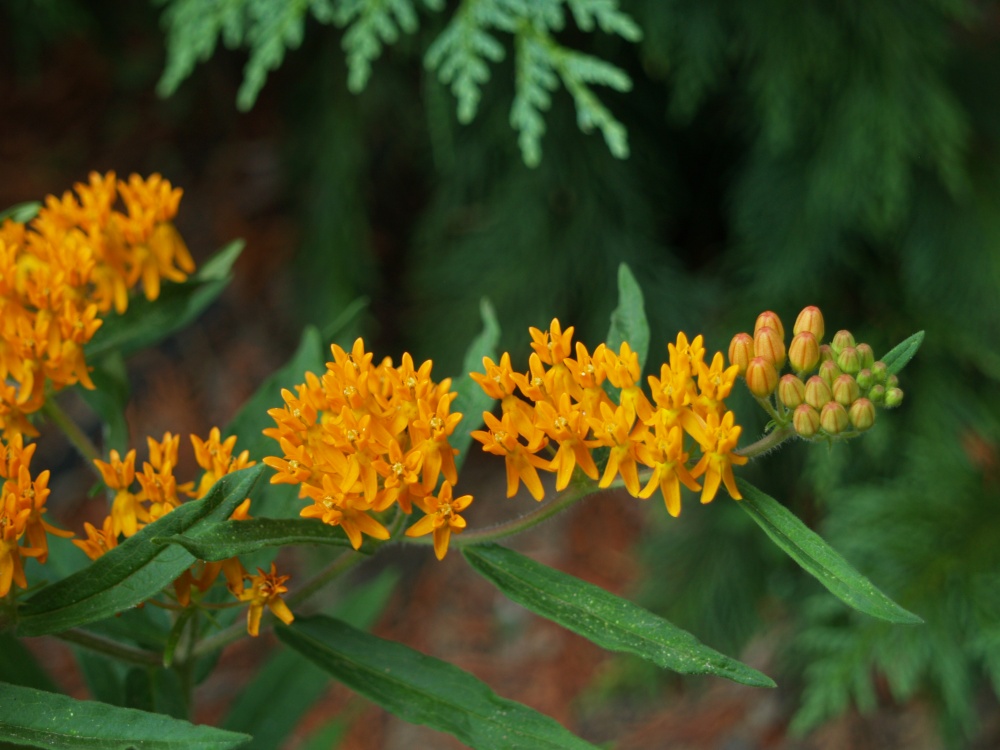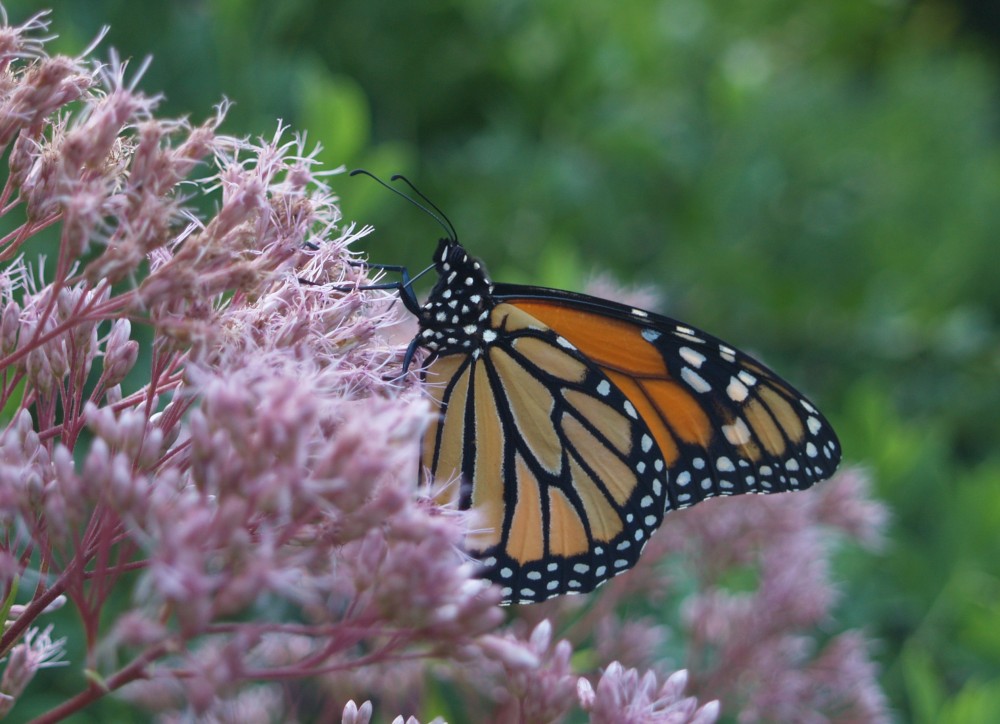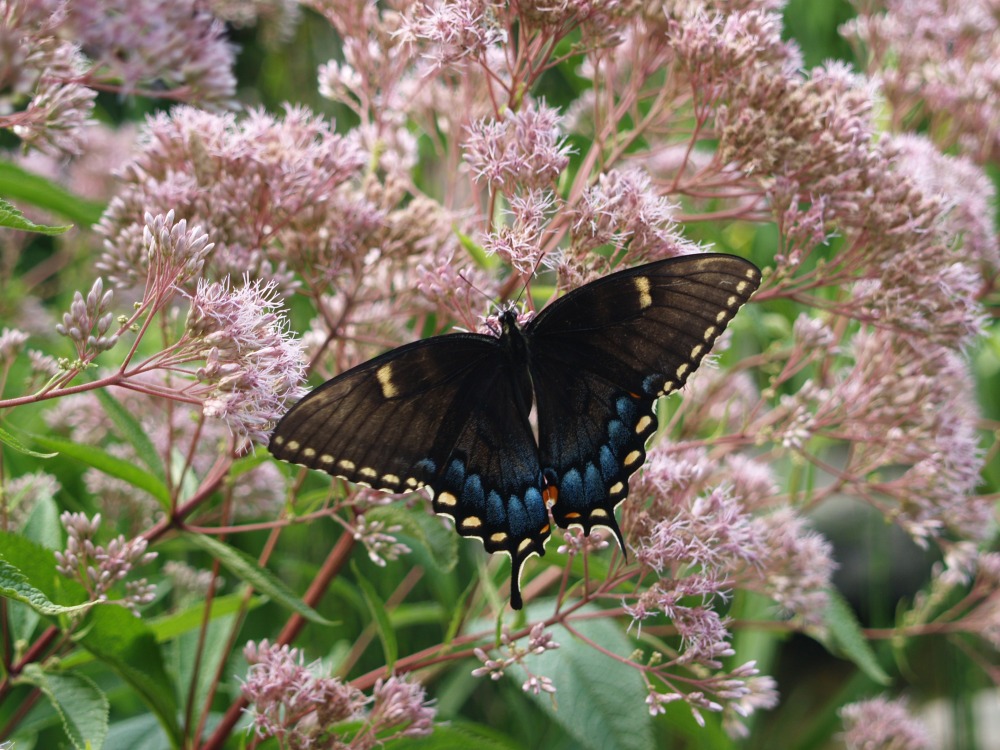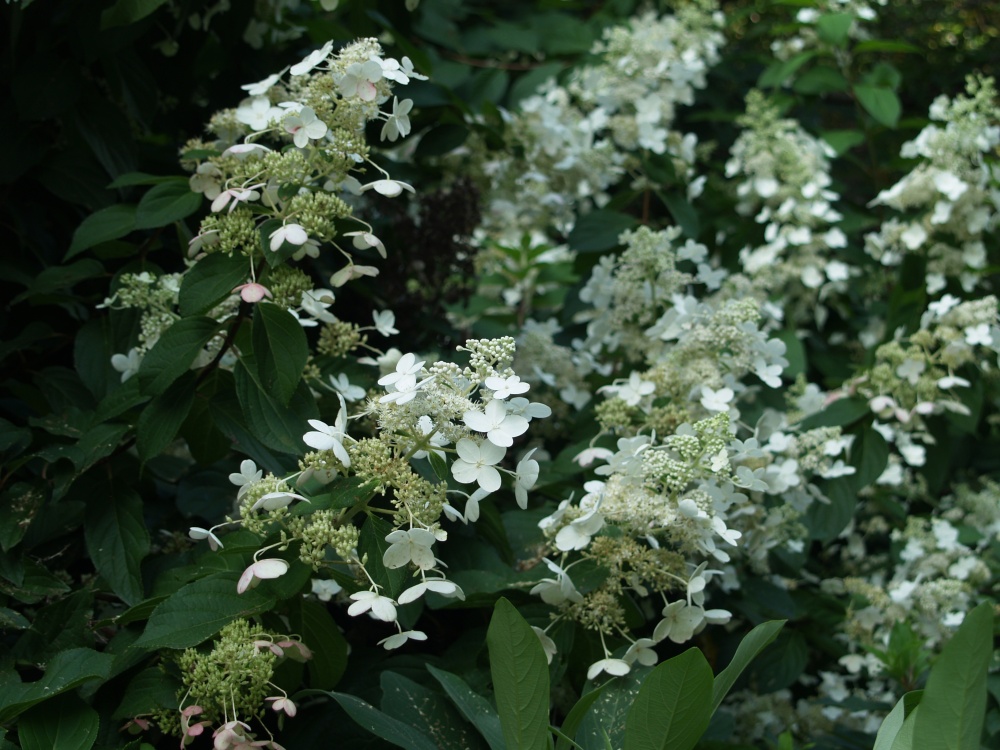 Evidently, I’ve failed. In recent years a a nice patch of butterfly weeds (Asclepias tuberosa, above) has flourished on the dry slope on the back side of the koi pond. Here, it grows and flowers splendidly, but the purpose for planting this patch was to attract butterflies, and there are none. In fact, there’s also hardly even a bee worth mentioning. Certainly, there are plenty of butterflies and bees in other parts of the garden, just not on this orange flowered native that is necessary for the survival of the Monarch butterfly (below).
Evidently, I’ve failed. In recent years a a nice patch of butterfly weeds (Asclepias tuberosa, above) has flourished on the dry slope on the back side of the koi pond. Here, it grows and flowers splendidly, but the purpose for planting this patch was to attract butterflies, and there are none. In fact, there’s also hardly even a bee worth mentioning. Certainly, there are plenty of butterflies and bees in other parts of the garden, just not on this orange flowered native that is necessary for the survival of the Monarch butterfly (below).
While I often have no clue why things happen as they do, I suppose I have an inking about what’s going on here. The butterfly weeds are sandwiched between a large evergreen and tall growing False Indigo (Baptisia australis) so that it is not easily seen or accessed, and there are no other summer blooms in the vicinity to attract pollinators. A bit of rearranging is called for, though there are limited spaces remaining in the garden with enough sun to suit the butterfly weeds.
The number of pollinators attracted to Mountain mint (Pycnanthemum muticum, above) does not disappoint, and if there was a question that only one or the other could be fit into the garden, undoubtedly, the mint would be planted. It can be a bit rambunctious, filling every inch of open ground, but it’s not too difficult to control, and there’s no doubt that it is favored by bees, wasps, and hoverflies. At any time there are more distinct types of pollinators than I can count, though I suppose a word of caution is required to warn that Mountain mint is not appropriate planted immediately beside a walk of patio where visitors will be brought into close contact with hoards of stinging beasts.
While butterflies and moths are attracted to Mountain mint, on a sunny day there are so many bees and wasps gathering nectar that butterflies opt for quieter environs, flowers of butterfly bushes (Buddleia), Joe Pye weed (Eupatorium dubium ‘Little Joe’, above), or one of the panicled hydrangeas (Hydrangea paniculata ‘Tardiva’, below). Even if they never find the butterfly weeds, there’s plenty of nectar to go around.
Dave, I’m in the same boat. Plenty of butterfly weed, even milk week, and the few butterflies I see don’t seem to go for it. I’ll keep it growing in case they change their minds! Great blog, by the way. Thanks so much for mixing humor, humanity and gardening!
I’ve been blessed with butterflies and caterpillars on the butterfly weed. Milk weed bloomed too early this year…would have enjoyed it’s beautiful scent this time of year. You are correct Dave; my butterfly weed is interspersed with agastache, phlox and peegee hydrangias…all providing a delectable feast
Hmmmm. Now that you mention it mine is vacant as well. For the first bloom cycle it was extremely popular, but now for the second flush I can’t think of seeing a single insect on it.
Clearly, one gardener’s problems are rarely unique. Much of the enjoyment of the garden is that the learning process is endless, and each day brings surprises.
The butterfly weed I planted never made it to the end of the season. I’m going to try again next year. I understand that’s all Monarchs will eat. But you’re right about other plants attracting all kinds of flying critters. There’s been studies that are showing native insects aren’t as choosy as we originally thought. They’ll adapt to hybrid plants and non-native plant species. Here’s to that learning process!